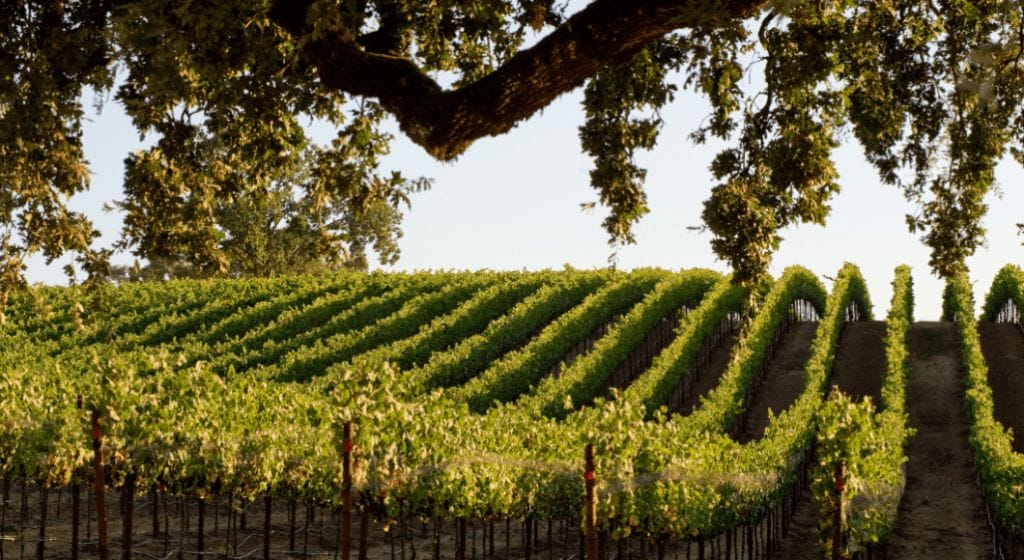Judging a wine by its label
The Importance of AVAs
American Viticultural Area
An AVA is a federally recognized grape-growing region with distinguishable growing conditions—such as climate, soil or elevation—that differ from surrounding areas.
Terroir
AVAs would be of little value were it not for the concept of terroir—the unique combination of environmental factors such as soil and climate that are expressed in the distinctive quality and character of crops grown in that environment. Though it does not account for the human element, a vineyard’s location/terroir is a useful indicator of the quality of the grapes that can be cultivated there.
There are over 200 AVAs
There are no size requirements for AVAs, and they vary drastically: The largest encompasses over 19 million acres and straddles four Midwestern states; the smallest is a mere 60-acre patch nestled between the Russian River and the Anderson Valley in Mendocino County.
California accounts for more than half of the nation’s AVAs—over 107 at last count. You’ll find vineyards in 46 of the state’s 58 counties. In total, more than half a million acres of California farmland are devoted to wine grapes. To include an AVA on a wine label, at least 85% of the grapes used must be grown in that AVA.
-
Russian River
The Russian River Valley AVA is an American Viticultural Area in Sonoma County, California. Centered on the Russian River, the Russian River Valley AVA accounts for about one-sixth of the total planted vineyard acreage in Sonoma County.
-
Russian River Valley
We source grapes from 16 vineyards in the Russian River Valley, including four of our own Estate vineyards. Situated in the geographical center of Sonoma County, its rolling hills seem custom-made for cultivating cool-climate grapes. Warm daytime temperatures are predictably tempered by the fog, contributing to an ideal climate that is neither too hot, nor too cold. Pinot Noir and Chardonnay flourish here. Indeed, grapes from this region are credited with bringing the wine world’s attention to California Pinot Noir. One of the earliest areas to be cultivated by grape growers, it remains home to most of the region’s old vine Zinfandel grapes, as well.
-
Mendocino
The Mendocino AVA is an American Viticultural Area encompassing Mendocino County, California. Within this larger appellation are several smaller AVAs. The Mendocino AVA is known for the cultivation of Mediterranean climate grapes including Carignan, Charbono, Grenache, Petite Sirah, Syrah and Zinfandel.
-
Yorkville Highlands
Mendocino County’s Yorkville Highlands AVA is situated between the Anderson and Alexander Valleys. Its climate, too, lies somewhere between the two—warmer than Anderson but cooler than Alexander. Several factors contribute to its Pinot-friendly environment: The elevation makes for happily chilly nights courtesy of the cold air that blows in from the nearby coastline. The gravelly subsoil provides vital drainage. And the relatively thin topsoil limits growth, resulting in fruit with excellent concentration.
-
Sonoma Coast
A cold climate and higher than average rainfall distinguish the half million acres of dramatic coastal land that comprise the Sonoma Coast AVA. A long, cold growing season allows the grapes to develop great complexity and desirable acidity. The soil here is shallow, thin and rocky, placing just enough stress on the vines to produce fruit with deep, concentrated flavors. The area has gained a reputation for Pinot Noirs and Chardonnays that rival the celebrated wines of Burgundy.
-
Anderson Valley
A relative new kid on the block in terms of recognition, Anderson Valley has only recently joined the pantheon of America’s top Pinot-growing regions. It’s no coincidence that Burt Williams decided to create a vineyard here after leaving Williams Selyem. Its hilly geography is reminiscent of Burgundy, and its proximity to the coast bestows upon it the benefits of cooling ocean breezes. The growing season here is a few weeks behind that of most other districts, a distinct advantage that allows the vines time to recover in the case of an unexpected heatwave.
-
Petaluma Gap
The country’s newest AVA, the Petaluma Gap is named for a narrow opening in California’s Coastal Mountain Range. The gap runs from the ocean to San Pablo Bay, straight through the town of Petaluma. Though the appellation is new, the region has been producing high quality wine grapes for over 150 years. Its climate is defined by wind and fog. Thanks to the “gap” and the surrounding topography, it enjoys cool temperatures even when adjacent areas are not so fortunate. This windswept region is one of few AVAs that cross county lines, occupying portions of southern Sonoma County and northern Marin. Pinot Noir accounts for 75% of the Petaluma Gap’s vineyard acreage.
-
San Benito County
The Gavilan Mountains of “East of Eden” fame separate San Benito from Monterey to the west. Despite its more southerly latitude, its climate is cooler than much of Napa, thanks to its higher altitude (2,200 feet) and its unique geography: gaps in the mountain range usher in cold ocean air from the Pacific. Its topography and soil are Burgundy-esque—abundant in rolling hills and limestone—and French immigrants planted vines here as far back as the mid-1800s. It provides a nurturing environment for a wide variety of grapes. We planted an Estate vineyard here with Pinot Noir and several aromatic whites including Chenin Blanc, Gewürztraminer and Grüner Veltliner.
-
Sonoma County
Between the Pacific Ocean and Napa Valley you’ll find Sonoma County. This area produces almost two times as much wine as Napa Valley, and is home to some of the most notable names in American-made Pinot Noir and Sparkling Wine. The region varies from low, fog-covered valleys to sunny hillsides. Because of the diversity of the area, each sub-AVA can produce incredibly different wine styles.
-
Central Coast
The Central Coast AVA is a large area that spans north from Santa Barbara County to the south of the San Francisco Bay Area. The boundaries of this AVA span portions of six counties and include around 100,000 acres planted to wine grapes. Within this larger AVA are several smaller appellations that share the same cooling influence from the Pacific Ocean. Chardonnay accounts for more than half of the total area.
-
Napa Valley
The Napa Valley AVA was established in 1981 and is considered one of the premier wine regions in the world. Records of commercial wine production in the region date back to the nineteenth century, when John Patchett established the Napa Valley’s first commercial vineyard in 1858. After the results of the Paris Wine Tasting of 1976, the region came to be seen as capable of producing the best quality wine – equal to that of Old World wine regions.
Discover
Our Wines
Discover
Our Vineyards
Discover


